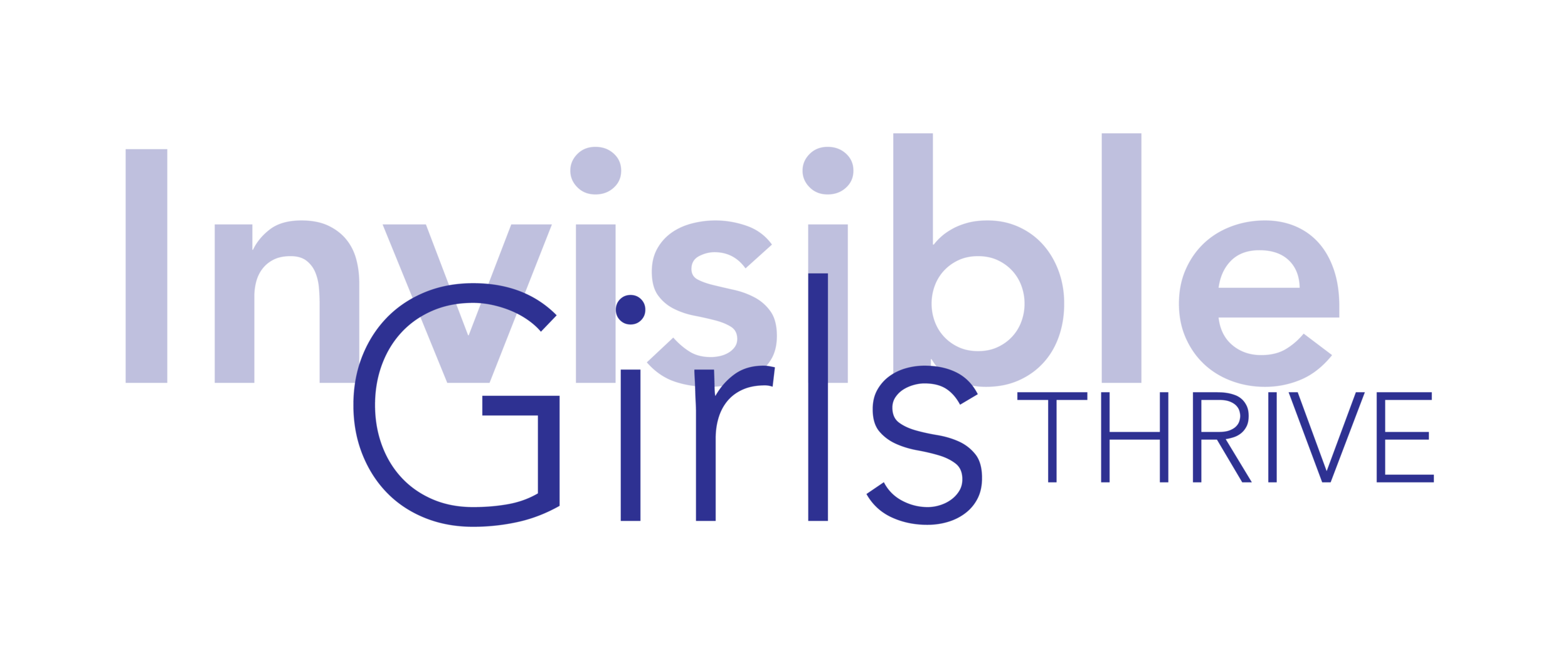Guide for Professionals
This is for all professionals working with Invisible Girls: Speaking The Truth About Sexual Abusewith their young female clients.
Two years after publishing Invisible Girls, and hundreds of emails as well as feedback and requests from workshops, my clients, friends, professionals, I have been asked to put together a guide to complement the psychological work survivors are doing with Invisible Girls. What I share here are ideas and ways girls themselves have told me the book works for them. Please consult this guide and tweak it, bend it, embrace it, whatever works best for you.
I hear from a lot of girls that they are jumping into the book at various points. If you can, advise your clients to start at the beginning. I wrote the book in four sections so that it takes the reader on a journey, with a distinct beginning, middle, and end. The Introduction, and Parts One and Two pave a road to healing and safety. Part One is like putting on your life preserver and Part Two proves you can get through the waters safely and survive. By the time the reader reaches Part Three her life preserver is securely fastened and she has the support to get through and navigate the muddy waters of her own experiences.
Warn them in advance that the book may trigger them — that reading about other abuse survivors may bring up lots of old material and feelings — and that they should not try to rush their way through it.
You may suggest that your client read a chapter on a kind of abuse that she did not experience so that she initially has some distance and can develop empathy, which can help tighten up the fasteners on the preserver (building defense mechanisms), as she sees that other girls have suffered and clearly the abuse was not their fault.
By reading about other girls' experiences, the survivor can slowly begin to realize that perhaps her abuse was not her fault. There will always be a girl who feels she suffered more than any of the girls in the book (and perhaps she has) and there will be girls who feel they have suffered much less and therefore do not have
the right to their feelings. I would encourage you to point out that there are no measurements to pain. Any unwanted touch is abuse. But again, beginning with empathy for another girl can often allow the reader to slowly bring herself that same empathy.
Some other ideas for working through the book:
◊ ask your client to bring in the section she most resonates with and develop therapy around that section
◊ develop a conversation around the "Lolita Complex"
◊ write a therapeutic letter releasing anger
◊ read sections from the book together
◊ journal together reactions to sections
◊ go through the "Ask Dr. Patti" section -ask if there are any more unanswered questions
◊ give encouragement and permission to stop reading when/if it gets overwhelming
Therapeutic Goals:
To stop feeling isolated
To not feel guilty about abuse
To learn how to cope
To rid themselves of shame
To build safe relationships
To feel safer and smarter regarding date rape
To forgive themselves
To negotiate their relationship with their mother
To relieve some physical symptoms
To develop pride and self esteem
To improve body image
To stop self-harming
To develop and/or know their support system
To find a safety net
To develop or re-discover creative releases
To believe their abuser can no longer hurt them
To be in touch with their physicality and sexuality
To develop healthy loving intimate relationships
One of the trickiest goals of the work of recovery is to negotiate the relationship with the mother. It is a rare case where incest occurs in a home with a mother who is emotionally healthy, unconditionally loving, and personally evolved around her own sexuality. Therefore, the relationship with the mother is often the most painful and difficult for particularly the incest survivor to come to any kind of terms with. But Invisible Girls can be grist for the mill on this topic, helping girls come to terms with the fact that they were not protected by their mothers and/or other adults around them. They learn what they can and cannot get out of those relationships. They can begin to forgive themselves when they look at their relationships with the adults who were there to protect them, often highlighting the mother- daughter relationship in context of their sexual abuse.
Here are just a few quotes from emails I have received from girls and women around the world:
"My therapist got me your book and for the first time I am realizing it is not my fault. I feel such love for the girls in the book."
"I read your book and I told my mum and she hugged me and told me she loved me. I can do anything now."
"After I read your book I told my mom about my uncle, because he started molesting my sister. He is in jail now."
"I read your book and I wanted to thank you for writing it and making these stories and insights available. I would have never been able to write, vocalize or paint what I had experienced if not for the book."
"My 16-year-old daughter just told us her cousin molested her when she was 6-years- old. Your book has saved our entire family in getting through this."
"I read your book and now understand my girlfriend. We were breaking up, but now more than ever I want to be there for her."
Invisible Girls is making waves because it is making sexual abuse visible all over the world. The most important things you can do are to just be there with your clients while they read the book, encourage them to speak out and tell their stories, and support them on their healing journey.
